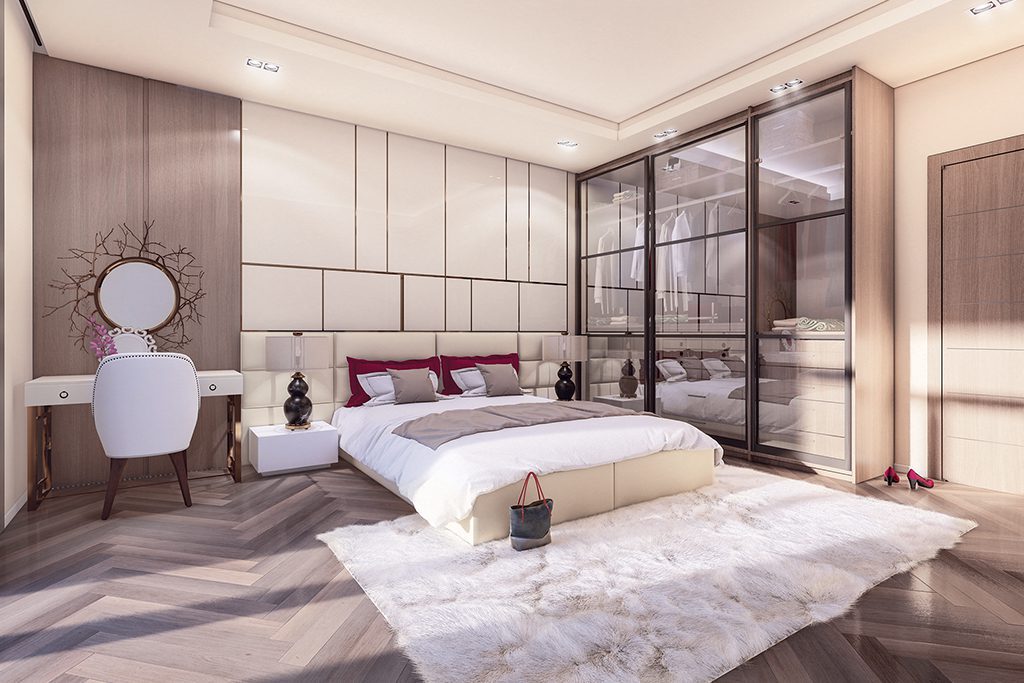Sustainable Interiors: How Eco-Friendly Design is Shaping Modern Apartment Living

Introduction
Sustainability isn’t just about solar panels or rainwater harvesting—it also lies in the choices made within the walls of a home. From flooring to furnishings, modern apartment interiors are undergoing a green transformation. Leading developments like Falaknaz Greens, One Beverly, and The Mega Mall are embracing eco-friendly interior design to meet the growing demand for healthier, sustainable living spaces.
This shift reflects a broader lifestyle change among urban homeowners in Pakistan—people want homes that are not only aesthetically pleasing, but also environmentally responsible and health-conscious.
What is Sustainable Interior Design?
Sustainable interior design focuses on creating indoor environments that:
Minimize environmental impact
Use energy and water efficiently
Promote indoor air quality and well-being
Incorporate recycled, upcycled, or responsibly sourced materials
It merges function and style with eco-conscious decision-making, ensuring that beauty doesn’t come at the cost of the planet.
Why it Matters in Pakistan
As the real estate industry in Pakistan becomes more sophisticated, buyers are:
Becoming aware of harmful chemicals in conventional materials
Demanding durable, low-maintenance interiors
Prioritizing health and wellness in indoor environments
Seeking long-term cost savings through efficient design
Developers that offer sustainable interiors are gaining a competitive advantage in an increasingly environment-conscious market.
Key Elements of Sustainable Apartment Interiors
1. Low-VOC Paints and Finishes
Traditional paints contain volatile organic compounds (VOCs) that release harmful fumes. At Falaknaz Greens, only low-VOC or zero-VOC paints are used to:
Improve indoor air quality
Reduce respiratory issues
Create safer spaces for children and elderly residents
Even finishes on wood and metal fixtures are now available in eco-safe formulations.
2. Eco-Friendly Flooring Options
At One Beverly, sustainable flooring materials are prioritized, such as:
Bamboo: fast-growing and highly renewable
Recycled wood: gives old timber new life
Natural stone or terrazzo: durable and long-lasting
Cork or linoleum: biodegradable and low-impact
These options are not only environmentally friendly but also stylish and durable.
3. Energy-Efficient Lighting and Appliances
Interior lighting contributes significantly to energy usage. Sustainable apartments feature:
LED lighting throughout rooms and hallways
Smart lighting systems with timers or motion sensors
Energy Star-rated appliances in kitchens and laundries
The Mega Mall’s serviced apartments use up to 60% less electricity thanks to these choices, saving money and resources.
4. Natural Light and Ventilation
Green design ensures that apartments are positioned to make the most of:
Sunlight for daytime brightness and warmth
Cross ventilation for airflow, reducing the need for fans or air conditioning
Falaknaz Greens uses large, strategically placed windows to promote energy efficiency and indoor comfort.
5. Sustainable Furnishings
Eco-conscious buyers now look beyond aesthetics in their furniture choices. Sustainable furniture features:
Reclaimed wood or recycled metal
Certified sustainable fabrics (organic cotton, hemp, jute)
Modular or multipurpose design for reduced material use
At One Beverly, developers even partner with eco-friendly furnishing brands to offer sustainable interior packages.
6. Indoor Plants and Green Décor
Living greenery enhances sustainability by:
Purifying indoor air
Adding natural beauty and biophilic comfort
Creating calming and productive environments
Communities like The Mega Mall encourage green décor with shared rooftop gardens and plant nurseries.
Benefits of Sustainable Interiors
For Residents:
Healthier indoor air
Lower energy and maintenance costs
Longer-lasting finishes and fixtures
Greater comfort and well-being
For Developers:
Higher property value and faster sales
ESG (Environmental, Social, Governance) compliance
Market appeal to eco-conscious tenants and investors
Incorporating sustainable interiors adds value at every level of a project—from concept to completion.
Challenges and How to Overcome Them
Challenges:
Higher upfront costs for eco-materials
Limited local availability of certified products
Lack of awareness among buyers
Solutions:
Partnering with sustainable suppliers
Using a hybrid approach (mix of conventional and green materials)
Educating buyers on long-term cost and health benefits
As the demand for sustainable design grows, these barriers will continue to fall.
A Shift in Buyer Preferences
Millennials and Gen Z buyers, in particular, are driving the trend toward greener interiors. They value:
Transparency in materials
Minimalist and eco-friendly aesthetics
Socially responsible construction practices
This shift is pushing developers like Falaknaz Greens and One Beverly to lead by example.
Final Thoughts
Sustainable interiors are not just a luxury—they’re the future of responsible living. As urban development in Pakistan accelerates, apartment design must evolve to meet both environmental and lifestyle expectations.
By embracing eco-friendly materials, smart design, and a commitment to wellness, communities like Falaknaz Greens, One Beverly, and The Mega Mall are redefining what it means to live in comfort—without compromising the planet.


